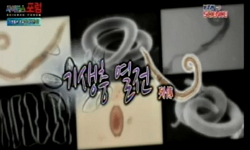1903년 9월에 문을 연 명월관은 조선 궁중 요리와 연희의 전통을 계승한 조선요리옥의 원조이자 조선의 맛과 풍류를 계승하고 보존한 ‘조선다움’의 표상으로 알려져 왔다. 그러나 명월관이...
http://chineseinput.net/에서 pinyin(병음)방식으로 중국어를 변환할 수 있습니다.
변환된 중국어를 복사하여 사용하시면 됩니다.
- 中文 을 입력하시려면 zhongwen을 입력하시고 space를누르시면됩니다.
- 北京 을 입력하시려면 beijing을 입력하시고 space를 누르시면 됩니다.

저자로 나온 궁중(宮中) - 한국 요정(料亭)의 표상 명월관(明月館) - = Court, go out into the streets - Myungwolgwan, the birthplace of modern entertainment in Korea -
한글로보기https://www.riss.kr/link?id=A104187721
- 저자
- 발행기관
- 학술지명
- 권호사항
-
발행연도
2017
-
작성언어
Korean
-
주제어
명월관 ; 요릿집 ; 궁중요리 ; 기생 ; 안순환 ; 전통문화 ; 유흥 ; Myungwolgwan ; high-class Korean-style restaurant ; court cuisine ; An soonhwan ; traditional culture ; pleasure
-
KDC
911.05
-
등재정보
KCI등재
-
자료형태
학술저널
-
수록면
93-124(32쪽)
- DOI식별코드
- 제공처
- 소장기관
-
0
상세조회 -
0
다운로드
부가정보
국문 초록 (Abstract)
1903년 9월에 문을 연 명월관은 조선 궁중 요리와 연희의 전통을 계승한 조선요리옥의 원조이자 조선의 맛과 풍류를 계승하고 보존한 ‘조선다움’의 표상으로 알려져 왔다. 그러나 명월관이 내세운 것도, 당대인들이 인정한 것도, ‘조선다움’이 아니라 오히려 ‘조선답지 않음’이었다. 명월관이 내세운 것은 최신의 설비와 음식의 개량, 청결과 위생으로써 기왕의 ‘조선다움’을 破天荒的으로 개혁했다는 점이었다. 명월관은 ‘신문물’이었고, 명월관 안에서 펼쳐진 연회와 공연은 ‘신문화’였다. 돈만 있으면 신분고하에 관계없이 궁중에서 공연하던 기생들의 시중을 받으며 고급 요리를 먹을 수 있다는 사실이야말로, 당대 한국인들에게는 ‘破天荒的’인 일이었다.
명월관이 조선다움의 表象 중 하나, 혹은 대표적 표상으로 부각된 것은 대략 1920년대부터였다. 그런데 이 ‘조선다움’은 料理보다는 총독부 권력이 의식적, 무의식적으로 조선의 이미지와 等値했던 妓生과 관련되어 있었다. 일제 강점기 명월관 요리가 ‘조선 전통 궁중 요리’인지는 중요하지 않았고, 대중도 그를 굳이 알려 들지 않았다. 그러나 기생이 ‘조선인’이라는 사실은 누구도 부정할 수 없었다. 음식은 조선식과 일본식을 섞을 수 있었으나, 기생의 몸을 藝者의 몸과 섞을 수는 없었다. 명월관의 ‘조선다움’은 기생의 연주, 노래, 춤, 웃음과 결부되어 공고한 지위를 획득했다.
그런데 일제강점기 기생도 ‘기생다움’ 즉 ‘조선다움’에서 이탈하여 퇴폐의 상징으로 변해 갔다. 개점부터 폐점에 이르기까지 반세기 동안, 명월관이 기호로서 표상하는 것들은 ‘신식과 개량’에서 ‘조선다움’으로, 다시 ‘퇴폐와 향락’으로 이동했다. 조선에 있던 것들을 ‘개량’하여 조선에 일찍이 없던 것들을 만들었음에도 그것이 ‘조선다움의 정수’로 인식되었고, 이 새로운 ‘조선다움’은 이윽고 ‘퇴폐 향락’과 결합되었다. 이 점에서 명월관은 한국 근대 유흥의 탄생공간일 뿐 아니라, 자체로 한국 근대가 관통한 장소였다.
다국어 초록 (Multilingual Abstract)
Myungwolgwan, formulated in 1903, has been known as the originator of the high-class Korean-style restaurant and the presentation of Korean traditional culture, Korean people believe that this has inherited the tradition of royal cuisine and performan...
Myungwolgwan, formulated in 1903, has been known as the originator of the high-class Korean-style restaurant and the presentation of Korean traditional culture, Korean people believe that this has inherited the tradition of royal cuisine and performances in Joseon Dynasty, and preserve the taste and arts of Joseon. However, Myungwolgwan did not claim to inherit the tradition, and the people of that period did not praise it because of preserving the tradition of Joseon Dynasty.
Myungwolgwan boasted that it had reformed the tradition of Joseon by improving its cuisine with up-to-date facilities and improving food. Myungwolgwan was a new facility, and the performance and reception offered by it was a new culture. For Koreans in that period, it was very surprising that anyone who has money were able to enjoy and eat high-quality dishes, regardless of status.
Since the 1920s, Myungwolgwan has emerged as a representation of the traditional culture of Joseon. But the traditional culture it represented was not food. It was related to the image of Gisaeng, and Japanese government general entitled them to represent Joseon culture. In th colonial era, It didn't matter that Myungwolgwan’s food was the royal cuisine of the Joseon Dynasty and people was not interested in it. But no one could deny that the Gisaeng was Koreans. Korean food and Japanese food could be mixed, but Korean Gisaeng and Japanese Geysha could not be mixed. The image that Myungwolgwan represents Korean traditional culture was hardend with the combination of Gisaeng’s singing, dancing, and laughing.
However in the colonial era, Korean Gisaeng lose her own characteristic and became a symbol of decadence, From open to close, Myungwolgwan was recognized as the representative of modern civilization, Joseon traditional culture, and decadence sequentially. Even though Myungwolgwan improved things in Korea and created things that were not in Korea, their creation was recognized as the best Korean culture elements. These elements were combined with decadence soon. Therefore Myungwolgwan is not only the birthplace of Korean modern entertainment, but also the place of representation of Korean modern period.
동일학술지(권/호) 다른 논문
-
1980년대 말 일본의 결혼이민과 뉴커머 재일코리안의 적응, 우울, 트라우마 (2) - 고부갈등, 동일본대지진 -
- 한양대학교 동아시아문화연구소(구 한양대학교 한국학연구소)
- 양아람 ( Yang Ah-lam )
- 2017
- KCI등재
-
프랑수아 줄리앙의 중국회화론 - 허실(虛實) 개념을 중심으로 -
- 한양대학교 동아시아문화연구소(구 한양대학교 한국학연구소)
- 이근세 ( Lee Keun-se )
- 2017
- KCI등재
-
근대 동아시아에서의 서구사상 수용에 있어서 유가사상의 역할 고찰 - 루소 『사회계약론』에 대한 나카에 쵸민(中江兆民)과 량치차오(梁啓超) 견해를 중심으로 -
- 한양대학교 동아시아문화연구소(구 한양대학교 한국학연구소)
- 김현주 ( Kim Hyunju )
- 2017
- KCI등재
-
청대 궁정희 극본집 『절절호음(節節好音)』의 판본 및 제작시기에 관한 고찰
- 한양대학교 동아시아문화연구소(구 한양대학교 한국학연구소)
- 임미주 ( Im Mi-ju )
- 2017
- KCI등재




 KCI
KCI KISS
KISS







